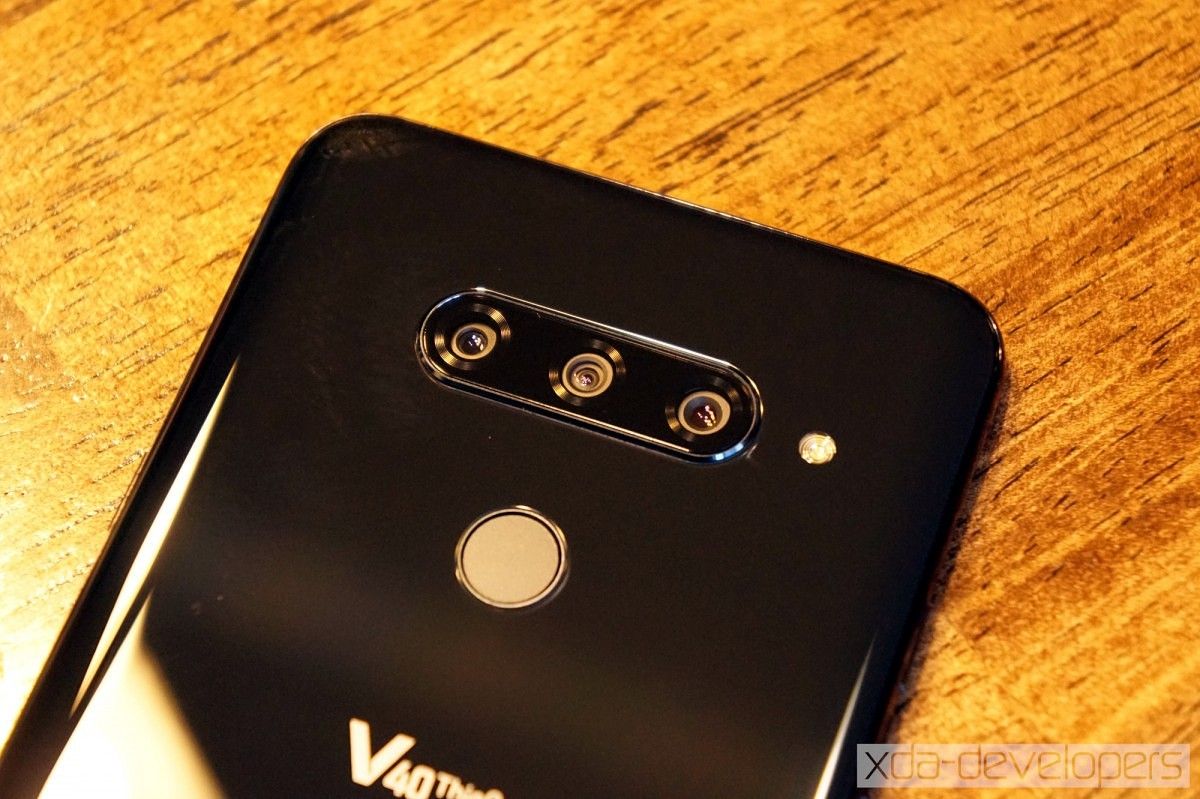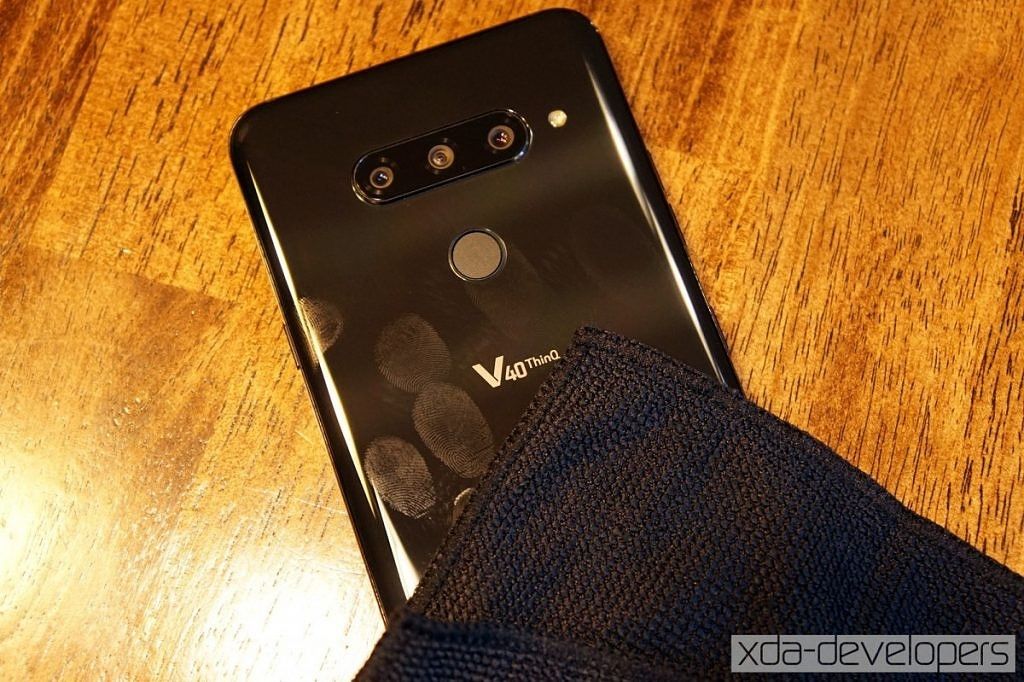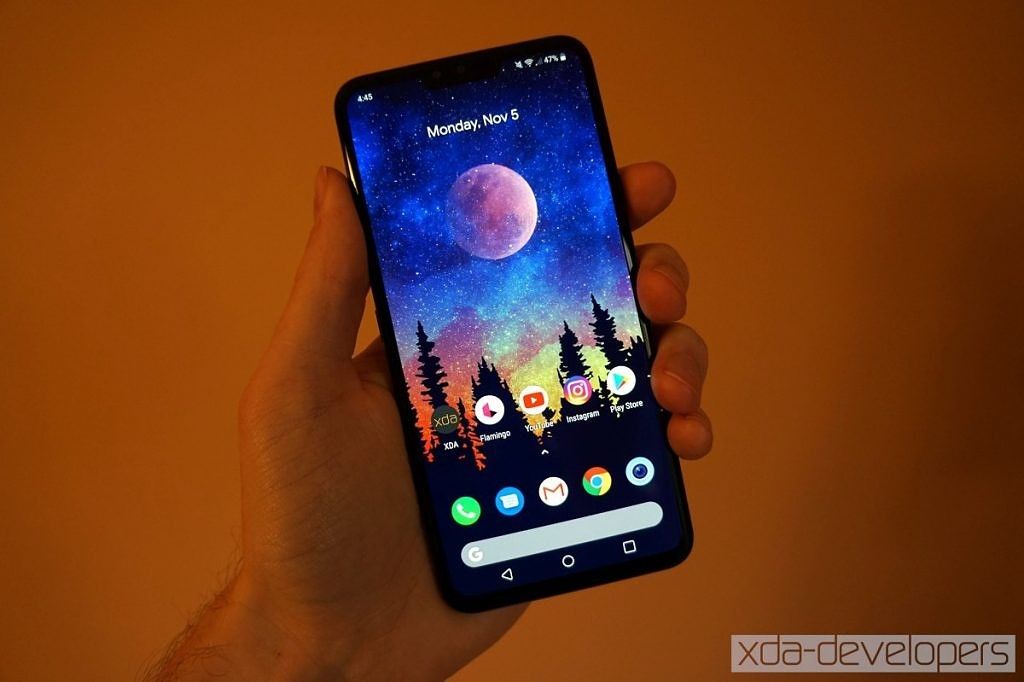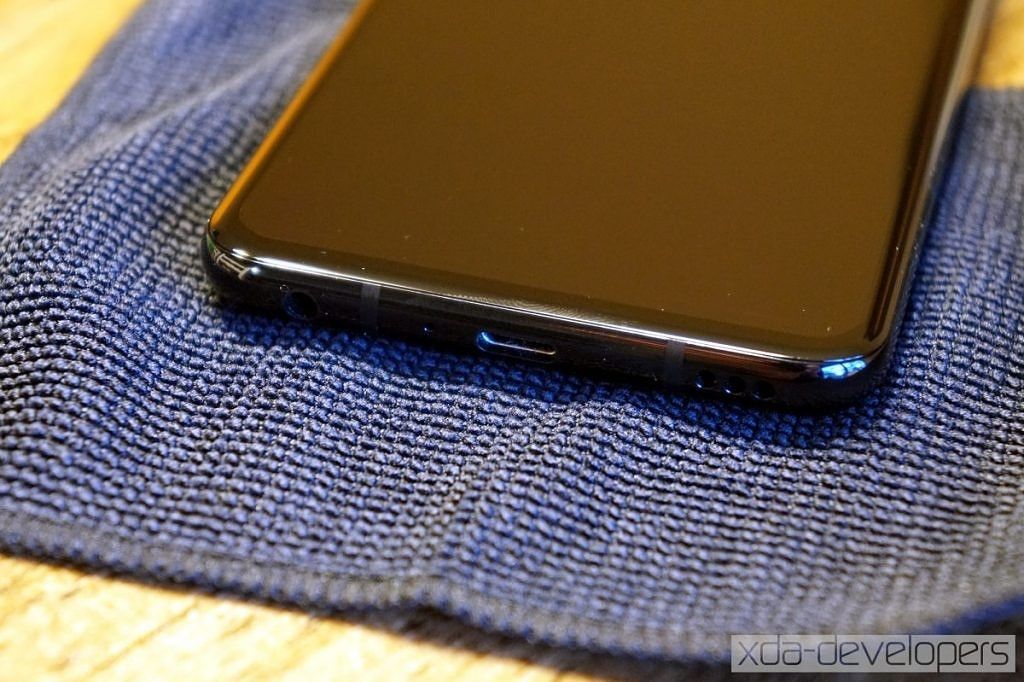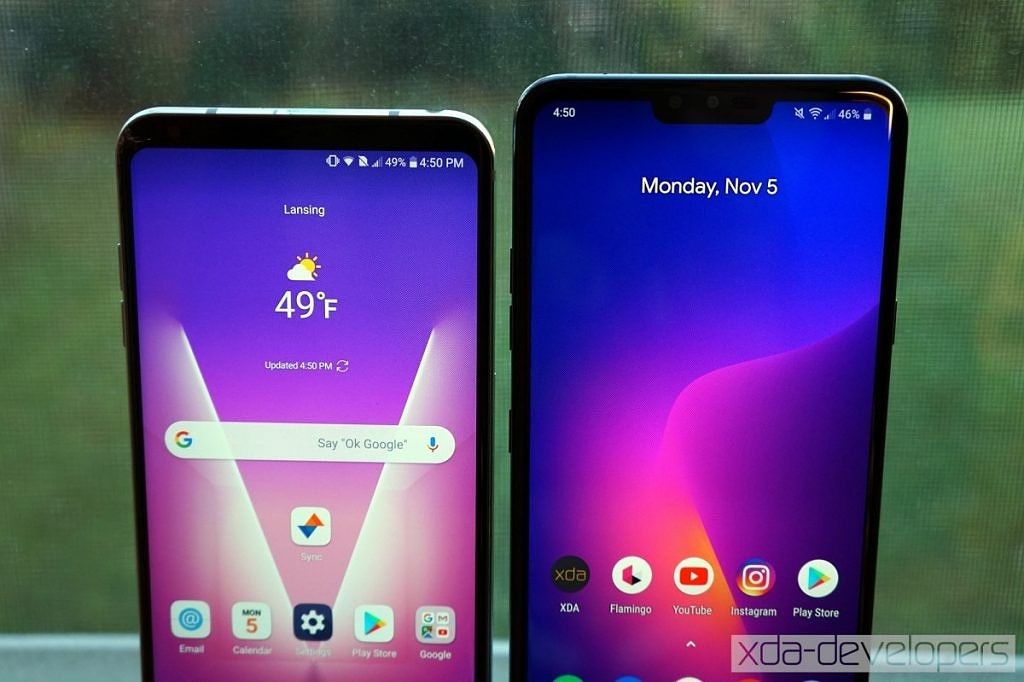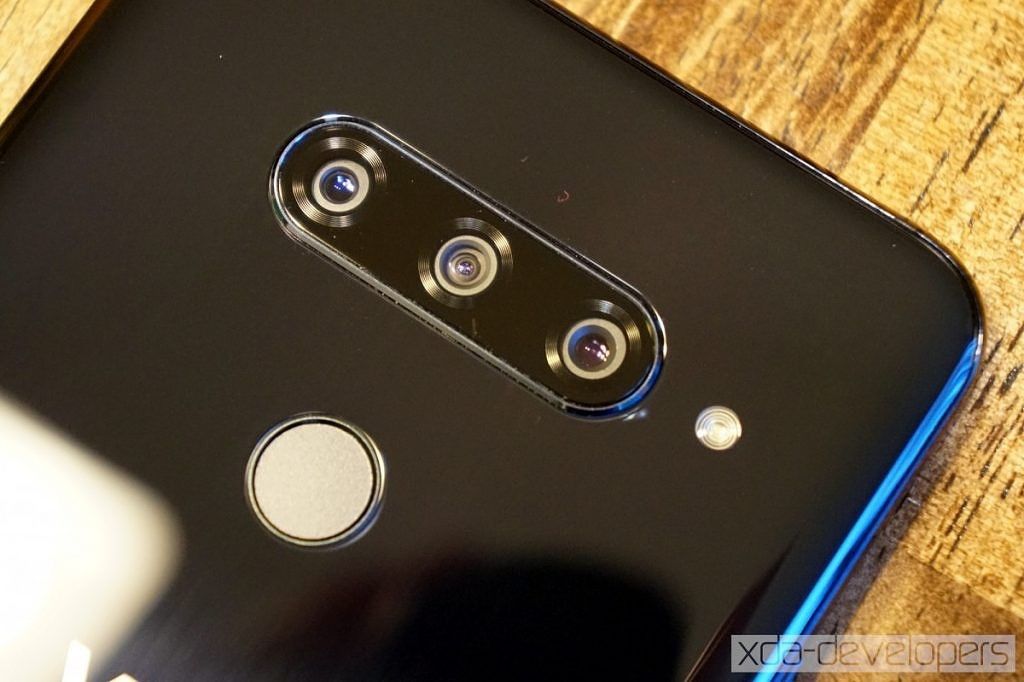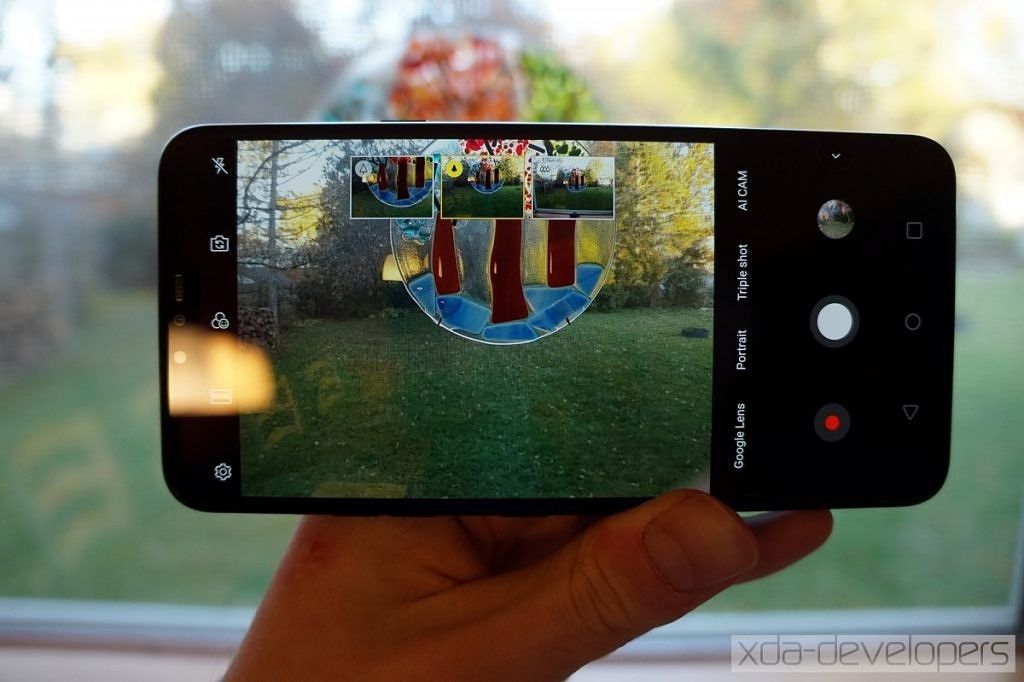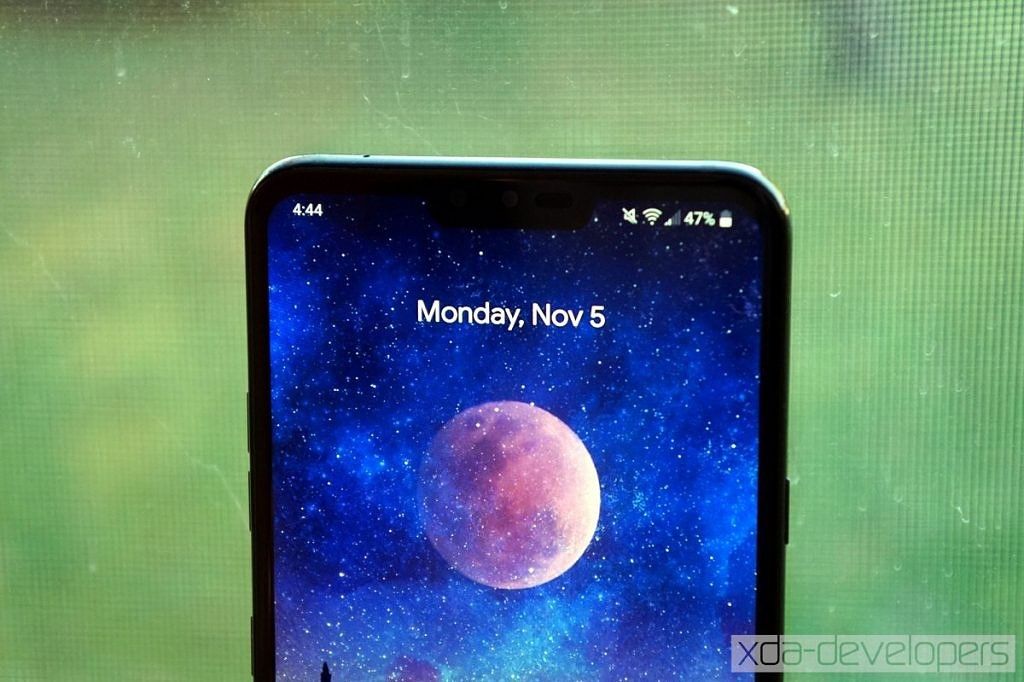October was a jamboree of new phone announcements from major Android OEMs. The month was kicked off with the LG V40 ThinQ, a device that grabbed headlines for having five cameras in total. The V Series started with the unique Second Screen, but it has slowly become more like the 'safer' G Series. That change started with the LG V30 last year and the transition looks to be complete with the LG V40.
On paper, the LG V40 seems to have everything it would need to compete with the Samsung Galaxy Note 9. But in the past, that hasn’t been good enough for LG. Can the best phone LG has ever made move the needle in the Android market? Or is the LG V40 doomed to be yet another forgotten device in LG’s long line of “pretty good†devices? Let’s dive in.
Note: This is a “mini†review. I will only be talking about the hardware, design, camera, and software.
|
Category |
LG V40 ThinQ |
|---|---|
|
Dimensions and Weight |
158.7 x 75.7 x 7.7mm, 169g |
|
CPU |
Qualcomm Snapdragon 845 @ 2.8GHz |
|
GPU |
Adreno 630 |
|
RAM |
6GB |
|
Rear Cameras |
12MP (standard, f/1.5 aperture, 1.4 μm pixel size) + 16MP (wide-angle, f/1.9 aperture) + 12MP (telephoto, f/2.4 aperture) w/ LED flash, Optical Image Stabilization, Dual Phase Detection Autofocus, 2X Optical Zoom |
|
Front Camera |
8MP (standard, f/1.9 aperture) + 5MP (wide-angle, f/2.2 aperture) |
|
Storage |
64GB, expandable up to 512GB via microSD |
|
Display |
6.4-inch 1440×3120 19.5:9 P-OLED FullVision Display, 536 PPI |
|
Audio |
3.5mm headphone jack (w/ 32-bit Hi-Fi Quad DAC), BoomBox speaker, DTS:X 3D Surround Sound, FM Radio |
|
Battery |
3,300mAh battery w/ fast charging (Qualcomm Quick Charge 3.0), wireless charging |
|
Ports |
USB Type-C (USB 2.0, 3.1 compatible) |
|
Fingerprint scanner |
Yes (rear-mounted) |
|
Software |
Android 8.1Â Oreo (LG UX 7.0) |
|
Connectivity |
Wi-Fi 802.11 a/b/g/n/ac (2.4 GHz/5GHz) Bluetooth 5.0 NFC LTE with VoLTE GPS / GLONASS |
|
Colors |
Aurora Black, Moroccan Blue |
|
Pricing |
Starting at $899.99 |
LG V40 Hardware & Design
LG has a methodical approach to design. Each iteration of the V and G series seems to take something from the previous device. The V30 refined the LG G6, the LG G7 took inspiration from the V30, and now the V40 is an update on the G7. I was a big fan of the design of the V30 and G7, so the V40 feels like a really solid amalgamation.
The device is covered in Gorilla Glass 5 on the front and back with aluminum along the edges. Glass is generally known for being a presentation area for fingerprints, but the V40 seems to be overly prone to fingerprints. The finish on the back also feels more like plastic than actual glass. I'm guessing those two things are related. Coupled with the lightweight body, the device doesn’t actually feel as premium as the G7 or V30. On looks alone, it’s an attractive phone, but the in-hand experience could be a lot better.
Another part of that in-hand feel is the size of the phone. I used the LG V30 as my primary device for a long time because I loved the size. It had a big display without feeling overly big in the hand. The V40 bumps up the display to 6.4-inches, and while the screen-to-body ratio is improved, it still feels considerably bigger. All the extra size is in the height, which makes the top of the display difficult to reach.
Like the G7, the V40 has the fingerprint scanner on the back and it no longer doubles as the power button. One thing LG continues to do really well is the fingerprint scanner -- this is one of the quickest and most accurate I’ve ever used. The power button is on the right side, while the volume buttons and Google Assistant button live on the left. If you’re in Google’s ecosystem you’re probably happy with Google Assistant, but like Bixby, it’s not remappable. On the bottom, you will find the Quick Charge 3.0 USB Type-C power, 3.5mm headphone jack, and speaker cutouts.
Speaking of audio, LG has included their usual array of high-end audio features. The LG V40 has the Boombox feature from the G7, which allows the phone to get much louder when you place it on a flat surface. Even when it’s not on a flat surface, you can really feel the phone vibrate with the resonance chamber when holding it in your hands. The headphone jack utilizes the 32-bit HiFi Quad DAC as well. I’m not an audiophile by any stretch, so this feature is wasted on me, but it is easy to hear a difference compared to other flagship phones.
We can’t talk about the design without mentioning the display notch. First, I won’t go too in-depth about the display quality, but the V40’s P-OLED display is better than the V30’s P-OLED panel, though not as much as I had hoped. The main issue with the V30’s display (and the Pixel 2 XL) was black crush. I used a reference image for home theater setups and put both phones on the exact same display settings. In this regard, the V40 is not much of an improvement. However, I do think it’s a nice display, though not on the same level as Samsung.
But back to the notch. The V40 follows the G7 as the second LG flagship with a notch. I don’t mind it at all here. LG managed to fit two cameras and an earpiece into a small notch. Note to Google, this is how you put two cameras in a notch. I know the Pixel 3 XL also has a stereo speaker, but I’d rather have a smaller notch like the V40. Like I mentioned above, the device is taller and the notch allows the display to go all the way to the top. It’s not easy to reach, and I still prefer the screen size of the V30.
Overall, this is one of the best-designed phones LG has made. It looks great and has all the bells and whistles you could want (wireless charging, IP68 rating, etc). My only complaint is it’s a little too big for my taste. The ultra-slim bezels look great, but usability has been sacrificed.
LG V40 Cameras
If you’ve seen any of the marketing for this phone you know the cameras are the main attraction. Five cameras are a lot. While none of the cameras are doing things we haven’t seen before, this is one of the few devices that puts them all in one package. Dual rear cameras is a pretty common thing nowadays, but you usually have to choose between a wide-angle or telephoto lens for the secondary camera. The V40 doesn’t make you choose. You can have your cake and eat it too.
On the back, we have a 12MP standard lens, 16MP wide-angle lens, and 12MP telephoto lens. The front features an 8MP standard lens and 5MP wide-angle lens. Let’s start with the triple cameras on the back.
LG has included plenty of reminders that there are three cameras at your disposal. There are three quick-change buttons on the viewfinder, which you can long-press to get a preview from all three lenses. “Triple Shot†takes a photo with all three lenses and stitches them into a short video. It’s a cool idea, but the results are usually one good shot and two really bad ones. These things are just gimmicks to show off the fact that you have three cameras.
Unsurprisingly, the 12MP main camera is the best. It has a  ƒ/1.5 aperture, 78-degree field-of-view, and 1.4µm pixel size. In well-lit conditions the photos look just as good as any other flagship phone out there today, though a little less “punchy†than the Pixel 3. LG has tweaked their photo processing and it does seem to be better. Low-light photos look good, though don’t expect any “Night Sight†magic from the "Super Bright" mode. And you should only be using the main camera in those conditions. The secondary cameras do not perform well in low-light at all.
Use the arrows to scroll through photo gallery
The 16MP wide-angle lens has a ƒ/1.9 aperture, 1µm pixel size, and 107-degree field-of-view. This is LG’s best wide-angle camera yet (same as the G7). They finally added image stabilization to the wide-angle lens so you can take videos that don’t look like you’re sitting on a washing machine. In well-lit conditions, you can get great shots, but again, don’t expect much in low-light.
Unfortunately, the worst of the trio is the new telephoto lens. The 12MP sensor has ƒ/2.4 aperture, 1µm pixel size, and a 45-degree field of view. The lack of OIS makes it very difficult to get a good, clear shot with the telephoto lens. Half of my attempts came out blurry and disappointing. It’s capable of good shots, but you need a steady hand. And again, you only should use the telephoto lens in good lighting.
Moving to the front of the device, the V40 has dual cameras. These are basically the same thing we saw in the LG G7. The main 8MP camera has a f/1.9 lens and 80-degree field-of-view, while the secondary 5MP camera has a f/2.2 lens and wider 90-degree lens. That’s not a huge difference in field-of-view, but it can come in handy sometimes. There’s nothing to write home about with these front cameras. They’re serviceable and unremarkable. The one thing I did notice is the aggressive face-retouching that is enabled by default. Turn that off and save yourself some nightmares. Speaking of faces, portrait mode works pretty well. You can adjust the background blur after the photo is taken, which is nice. I still don't think it's as good as Google's portrait mode, but it's close.
Having five cameras in your pocket is an attractive idea, but it can sometimes feel like too much. There’s a lot going on here. LG has put a ton of options into the camera app and they clearly want you to explore all the different cameras. It can be overwhelming if you want to snap a quick photo. Especially if you accidentally use one of the secondary cameras, which are not as good as the main shooter. If you compare the V40 to the Pixel 3 you are choosing between 3 good cameras and 1 exceptional camera. I'll take the one camera.
LG V40 Software
The LG V40 is running Android 8.1 Oreo out of the box. We don’t know when LG plans to roll out Android Pie, but it will most likely take a while yet. LG’s Android skin is not known for being one of the best, but I don’t mind it. They’ve actually done a pretty good job with the look on their last few flagship devices. For the most part, everything looks like you would expect. LG isn’t trying to reinvent Android. They just add their own little touches here and there.
The V40 is running basically the exact same software as the LG G7. That means I have the same gripes as I did on that device. LG still does not allow you to make the navigation bar black. The color options are all light pastels. I find this to be borderline unusuable, especially in dark themed apps. To get a black nav bar you need to install a 3rd-party theme or enable High Contrast Mode in the Accessibility settings.
During setup, you will be asked to choose how you want the “New Second Screen†a.k.a. notch status bar to look. The option to “hide†the notch only works in LG’s own apps, which makes it useless. Use Nacho Notch if you really want to hide the notch, but I don’t think it’s necessary. The “Floating Bar†widget is still here, though it’s not enabled by default like it was on the V30. This is a small dock that can hold shortcuts. You can swipe it open from anywhere on the edge of the screen.
Game Tools includes settings to enhance your gaming experience. Context Awareness is a set of tools which allow you to control settings based on situations (think Tasker Lite). Lastly, LG has a few features that have stuck around for a long time. You can double-tap the display to wake the phone (or use a Knock Code to unlock it). The volume buttons can be used as shortcuts to quickly launch the camera and notes. The stock launcher does not have an app drawer by default. You can change that in the Settings and also remove the app drawer icon from the dock so you can use the swipe-up gesture.
Strangely, I’ve never minded LG’s Android skin. Some people think it’s the ugliest thing on Earth. I think it mostly stays out-of-the-way and is easy to customize if you don’t like it -- that’s what I want from an OEM skin. At the moment, LG includes just enough tools and unique features to add value without an overcomplicated experience.
Conclusion
My conclusion on the LG V40 is very similar to what I’ve had with past LG phones. On paper, this is a great device. And indeed, in person, it’s a really nice device as well. But beyond the attention-grabbing “FIVE TOTAL CAMERAS!!!â€, this phone is actually pretty boring. The V40 is screaming “please pay attention to me!†and it has already been forgotten by most people. Zombie commercials aren’t helping either.
Like the Galaxy Note 9, this is a phone that seems to have everything but the kitchen sink. The problem is LG phones don’t feel as polished as devices from Samsung and that’s who LG is competing with head-to-head with every device. The V40 is a nice phone, but you have to do better than “nice†to beat Samsung.
It’s hard to recommend the V40 for $900 when the Galaxy Note 9 is arguably better in almost every way for a similar or cheaper price. If the phrase “always a bridesmaid, never a bride†was a phone company, it would be LG. This is the best phone LG has ever made. But LG’s best and Samsung’s best are not the same. If you buy the V40 you’ll enjoy it just fine, it’s certainly not a bad phone. 2018 has seen some truly remarkable devices, and I’m not sure the V40 fits in the conversation. No amount of cameras can change that.

